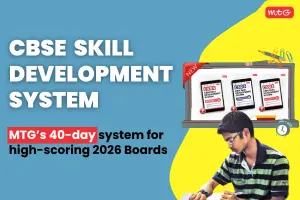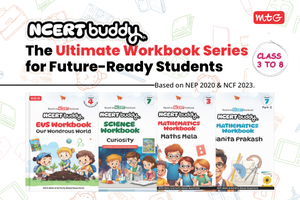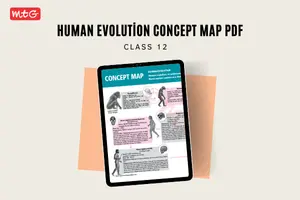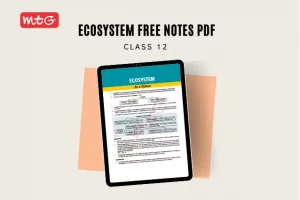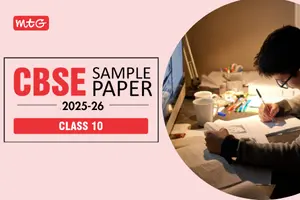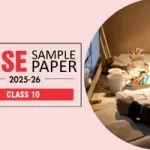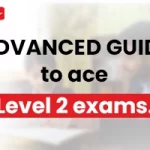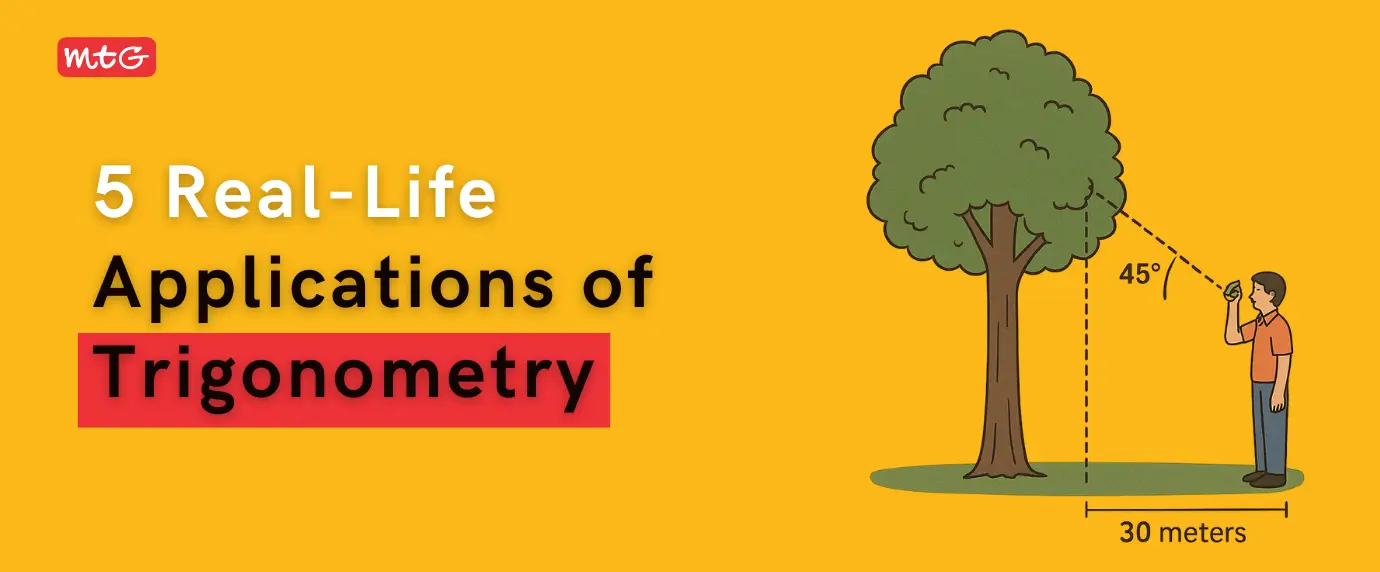
Terms like sine, cosine, and tangent can feel abstract and disconnected from real life. But the truth is, trigonometry is all around us. It is used in fields like architecture, game design, sports, space science, and the phone’s GPS. For many students, trigonometry appears overwhelming, but in this article, we will talk about five real-life applications of trigonometry, presented as simple, relatable experiments or scenarios. If you are a Class 10 student, teacher or someone eager to know about the real world with trigonometry integration, with these examples, you will know that trigonometry is more than just a topic in a textbook and how it helps us solve real-life problems. Let’s make trigonometry less stressful and more exciting.
Quick practice boost: Try MTG’s Class 10 Maths MCQ (chapter-wise PDFs) to sharpen basics alongside this read.
Table of Contents
- What Is Trigonometry? A Quick Refresh
- 5 Real-Life Scenarios to See How Ideas Turn into Practical Tools in Real Life
- Why This Matters: The Power of Real-Life Math
- Conclusion
What Is Trigonometry? A Quick Refresh
Trigonometry is the study of the relationships between the sides and angles of triangles, especially right-angled ones.
Trigonometry has three key ratios:
| Function | Formula | Used To Find |
| Sine (sin) | Opposite / Hypotenuse | Vertical height |
| Cosine (cos) | Adjacent / Hypotenuse | Horizontal side |
| Tangent (tan) | Opposite / Adjacent | Height when base is known |
Want focused practice? See Introduction to Trigonometry – Test Paper 08 and its solutions
5 Real-Life Scenarios to See How Ideas Turn into Practical Tools in Real Life
- Measuring Heights Without Climbing – A Tree-Top Experiment
Imagine you’re standing near a tall tree, and you want to know its height, but you cannot climb it, and you do not have a long measuring tape.
Here’s how you can find out using trigonometry:
Let’s say you’re standing 30 meters away. Use a protractor or app to measure the angle from your eyes to the top of the tree. Suppose the angle is 45°.
Use this formula: Height = tan(angle) × distance
Height = tan (45°) × 30 = 1 × 30 = 30 meters
So, the tree is 30 meters tall.
This simple activity shows how trigonometry lets us calculate things we can’t physically measure. Surveyors, engineers, and architects use the same method every day.
Related practice: Some Applications of Trigonometry – Test Paper 09
2. Navigation- Finding Your Way
Have you ever used Google Maps or GPS to get somewhere? Did you know it uses trigonometry? Planes, ships, and even hikers rely on trigonometry to calculate:
- The shortest route between two points
- The direction they need to go (called bearings)
- How to adjust when conditions like wind or currents push them off course
How It Works:
Imagine you are at Point A, and you want to go to Point B, which is not in a straight line from where you are.
- You know the distance between some points
- You know the angle you need to turn to face the right direction (called a bearing)
By using sine, cosine, or tangent, you can calculate:
- How far do you need to go in a certain direction?
- What angle to turn at to stay on course?
This is how pilots, sailors, and even hikers find the shortest and most accurate route to their destination.
Example:
- You are standing at Point A
- Point B is 50 meters away at an angle of 30° from where you’re facing
To figure out how far you need to walk forward and how far to move sideways, you can use:
- Forward distance = 50 × cos (30°) ≈ 43.3 meters
- Sideways distance = 50 × sin (30°) ≈ 25 meters
This breaks your movement into two simple directions you can follow.
For boards prep: download CBSE Class 10 Sample Papers (Maths) and the Mathematics (Standard) sample paper to apply trig in exam-style questions.
3. Game Design and Animation- The Hidden Math
Ever played a video game where the character jumps, spins, or flies across the screen? That smooth, realistic movement is made possible by trigonometry.
Game developers use sine, cosine, and tangent functions to:
- Control the angle of jumps
- Rotate objects or characters
- Create 3D environments that feel natural
Real Example:
If a character needs to move in a circular path, developers use:
- x = r × cos(θ)
- y = r × sin(θ)
Where “r” is the radius of the movement and “θ” is the angle.
Try This:
Introduce students to platforms like Scratch or Tynker, where they can:
Move characters based on angles, program objects to rotate or bounce. It makes the connection between math and creativity come alive.
Keep skills warm between topics with fun reads like 10 Mind-Blowing Math Tricks or Mental Math Shortcuts
4. Building Safe Structures – Trigonometry in Architecture
Have you ever seen the sloped roof of a house or the strong, triangular supports of a bridge? Trigonometry helps engineers and architects design structures that are not only functional, but safe and beautiful.
They use it to:
- Calculate the angle of a roof for rainwater to slide off
- Design triangular trusses in bridges for strength
- Measure accurate angles while laying bricks or cutting beams
Quick Experiment:
Build a model bridge using cardboard or straws.
- Use right-angled triangles to form supports.
- Apply trigonometric formulas to calculate the angle and length of each part.
Students can see how math quite literally supports the world we live in.
Strengthen fundamentals with Class 10 Maths MCQ (chapter-wise) and Practice Papers to test angle/length problems quickly.
5. Astronomy – Exploring Space With Angles
Real-Life Scenario:
How do astronomers figure out how far away a star is when they cannot visit it?
They use parallax, a technique based on right triangles and the angle between two viewing points. Using trigonometry, astronomers calculate:
- The distance between Earth and stars
- The orbits of planets
- The exact timing and position of eclipses
Fun Fact:
Ancient mathematicians like Eratosthenes used just the angle of the sun and the shadow of a stick to calculate the Earth’s circumference thousands of years ago.
In-Class Demo:
Place a small object (like a pencil) on a table.
- Observe it from two different positions.
- Measure the angle difference.
- Use a simple formula to estimate distance.
- Even basic tools can demonstrate big space ideas.
💡 Inspiration corner: Math discoveries that changed the world
Why This Matters: The Power of Real-Life Math
When students see how and why math is used, it stops feeling like something to memorise and starts feeling like something to explore. Trigonometry helps develop Problem-solving skills, Spatial reasoning and Curiosity about the world. It is also the foundation of many exciting careers, from engineers and scientists to pilots, designers, and coders.
Tips for Teachers
- Make it visual: Use drawings, models, or even mobile apps.
- Relate to interests: Connect math to sports, games, or nature.
- Encourage exploration: Let students ask “what if?” and test it out.
- Use tech wisely: Online simulations can make trigonometry fun and interactive.
Practical next steps for students: How to Score 100 in Class 10 Maths
Conclusion
Trigonometry Is Everywhere; it is not just for exams, it’s for life. From measuring trees to designing buildings, navigating maps to exploring the stars, it’s a subject full of discovery and purpose. By showing students real-life applications of trigonometry, we can spark curiosity, improve understanding, and help them see math not as a burden, but as a tool to understand the world. Encourage each student to ask questions, experiment, and look around the world. You never know what they will discover next.


